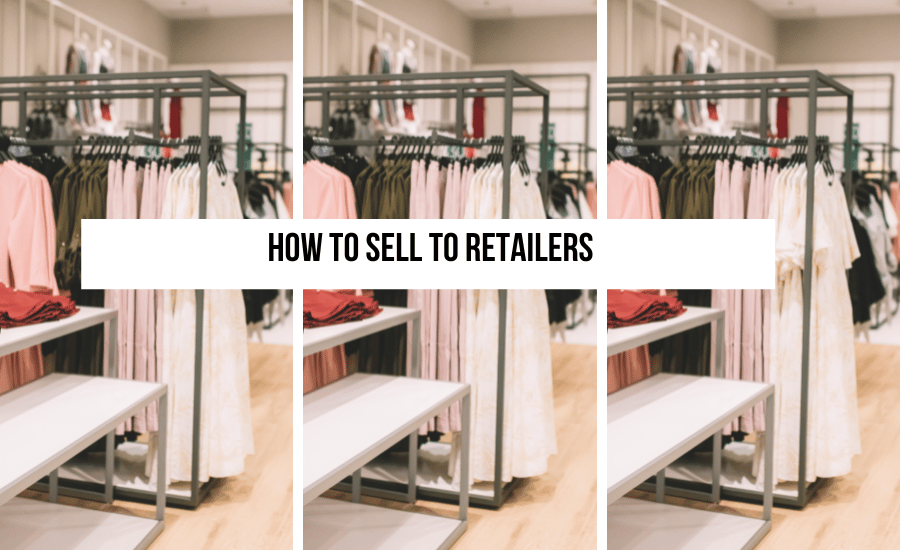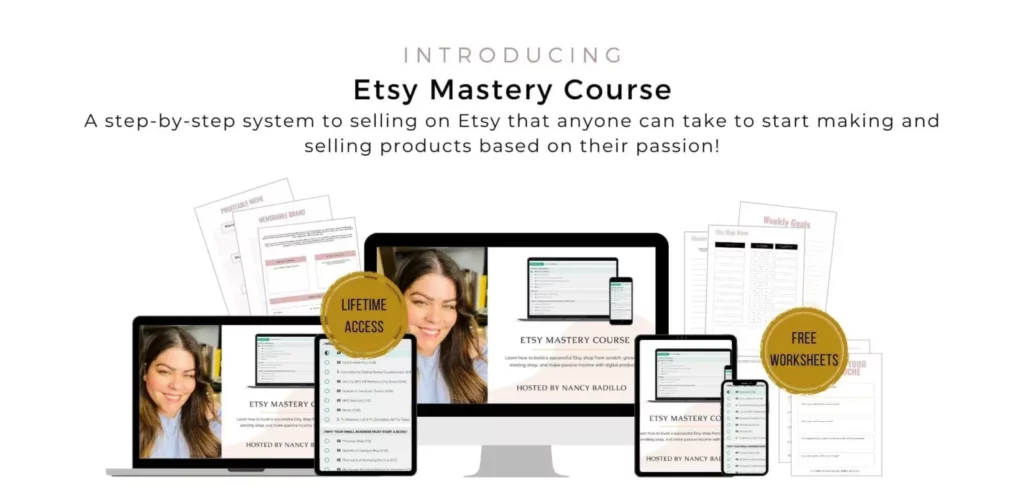Are you a business owner looking to expand your product reach and increase sales? Selling to retail stores can be a game-changer for your business, providing you with a wider customer base and increased visibility. However, breaking into the retail market can be challenging without the right strategy. That’s where I come in. As a highly skilled assistant specializing in copywriting, content writing, and digital marketing, I have the expertise to help you navigate the complex world of retail sales.
From crafting compelling pitch emails to creating persuasive product descriptions, I can assist you in creating a winning sales strategy that will capture the attention of retail buyers and secure valuable shelf space. With my skills in both SEO and conversation optimization, I can ensure that your content not only ranks high in search engine results but also compels retail buyers to take action. Get ready to take your business to the next level and start to learn how to sell to retail stores.

This blog post is all about how to sell to retail stores.
Home > Ecommerce Tips > How To Sell To Retail Stores
DISCLOSURE: This is a sponsored post. Through my links, I may receive a commission if you decide to make purchases at no cost for yourself! Check out our disclaimer for more info on how it works.
Ready to embark on your Etsy business journey but unsure of where to begin? Join our free masterclass, where we empower you to start, manage, and scale your Etsy business into a full-time income. With our guidance, 9,000+ individuals have found success, even without a social media presence or email list. Step into the world of Etsy entrepreneurship, and let us guide you to success. Join us now!
Table of contents
Understanding the Retail Industry
Before diving into the process of selling to retail stores, it is essential to have a solid understanding of the retail industry as a whole. Retail is a dynamic and ever-evolving industry that encompasses a wide range of businesses, from small boutiques to large chain stores. Understanding the different types of retail stores and their unique characteristics will help you tailor your sales approach and better position your products or services.
Firstly, it is important to differentiate between brick-and-mortar retail stores and e-commerce retailers. Brick-and-mortar retailers operate physical stores where customers can browse and purchase products in person. On the other hand, e-commerce retailers sell products exclusively online. While both types of retailers offer their own set of advantages, selling to brick-and-mortar stores requires a different set of strategies and considerations.
In addition to the type of retail store, it is also important to understand the various retail channels. Retail channels refer to the different avenues through which products are sold to consumers. These can include department stores, specialty stores, supermarkets, convenience stores, and online marketplaces. Each retail channel has its own target audience, product assortment, and pricing strategy. Understanding the characteristics of each channel will help you identify the most suitable retail stores for your products or services.
Benefits of Selling to Retail Stores
Selling to retail stores offers numerous benefits for businesses looking to expand their reach and increase sales. Let’s explore some of the key advantages of selling to retail stores:
1. Increased Exposure and Visibility: Retail stores provide a physical presence for your products, allowing potential customers to see, touch, and experience them firsthand. This exposure can significantly increase brand awareness and attract new customers who may not have discovered your products otherwise.
2. Access to a Wider Customer Base: By selling through retail stores, you can tap into the existing customer base of those stores. This gives you the opportunity to reach a larger audience and potentially increase your sales volume.
3. Credibility and Trust: Being stocked in reputable retail stores lends credibility and trust to your brand. Customers tend to trust products that are sold in well-known retail establishments, which can positively impact their purchasing decisions.
4. Professional Packaging and Merchandising: Retail stores often have specific packaging and merchandising requirements that can enhance the presentation of your products. This can make your products more visually appealing to customers and increase their perceived value.
5. Opportunities for Cross-Promotion: Collaborating with retail stores can open up opportunities for cross-promotion. This means that your products may be featured alongside complementary products, increasing the likelihood of additional sales.
6. Consistent Revenue Stream: Establishing relationships with retail stores can provide a consistent revenue stream for your business. Unlike some other sales channels, retail stores typically place regular orders, ensuring a steady flow of income.
By leveraging these benefits, selling to retail stores can be a strategic move that propels your business forward. However, it is important to approach the process with a well-defined strategy to maximize your chances of success.
Identifying Your Target Retail Stores
Before you can start selling to retail stores, it is essential to identify the most suitable retail stores for your products or services. This involves conducting thorough market research and understanding your target audience.
1. Define Your Target Audience: Begin by clearly defining your target audience. Who are your products or services designed for? What demographics, interests, and preferences do they have? Understanding your target audience will help you identify the retail stores that cater to their needs and preferences.
2. Research Competitors: Study your competitors to identify the retail stores they are selling through. Look for commonalities in the types of stores they are targeting and consider whether those stores would be a good fit for your products or services as well.
3. Consider Store Format and Customer Base: Evaluate the format and customer base of potential retail stores. Are they specialty stores or general merchandise stores? Do they target a specific demographic or have a broad customer base? Understanding these factors will help you determine if a store aligns with your target audience and product positioning.
4. Assess Store Reputation and Brand Alignment: Research the reputation and brand alignment of potential retail stores. Check customer reviews, social media presence, and overall brand image to ensure that the stores you are considering align with your brand values and quality standards.
5. Evaluate Store Location and Accessibility: Consider the location and accessibility of potential retail stores. Are they located in areas where your target audience is likely to visit? Are they easily accessible for potential customers? These factors can impact the foot traffic and visibility of your products within the store.
By carefully identifying your target retail stores, you can focus your efforts on the most promising opportunities and tailor your sales strategy accordingly.
Conducting Market Research
Conducting thorough market research is a critical step in the process of selling to retail stores. This research will provide valuable insights into market trends, customer preferences, and competitor strategies, helping you position your products or services effectively. Here are some key steps to consider when conducting market research:
1. Analyze Market Trends: Stay updated on the latest market trends in your industry. This can include changes in consumer behavior, emerging product categories, or new retail formats. Understanding these trends will help you identify opportunities and adapt your sales strategy accordingly.
2. Study Customer Preferences: Gain a deep understanding of your target audience’s preferences and buying habits. This can be done through surveys, focus groups, or analyzing customer feedback. By understanding what motivates your customers to make a purchase, you can tailor your sales pitch and product offering to meet their needs.
3. Identify Competitor Strategies: Study your competitors’ strategies and tactics. What retail stores are they selling through? How are they positioning their products? Analyzing competitor strategies can provide valuable insights and help you differentiate your products in the market.
4. Assess Market Size and Potential: Evaluate the size and potential of the market you are targeting. Is there a demand for your products or services? What is the market size and growth rate? Understanding the market dynamics will help you set realistic sales goals and allocate resources effectively.
5. Identify Market Entry Barriers: Identify any potential barriers to entry in the retail market. This can include factors such as high competition, stringent product requirements, or limited distribution channels. By understanding these barriers, you can develop strategies to overcome them and increase your chances of success.
By conducting comprehensive market research, you can gain a competitive edge and make informed decisions throughout the sales process. This research will serve as the foundation for creating a compelling product or service offering that resonates with retail buyers and customers.
Final Thoughts: How To Sell To Retail Stores
In conclusion, learning how to sell to retail stores can be a game-changer for your business. By following the steps outlined in this guide, from researching your target market to perfecting your pitch and building relationships, you’ll be well-equipped to approach retail buyers with confidence. Remember, persistence is key, so don’t be discouraged by initial rejections. With determination and a compelling product, you’ll be on your way to securing valuable partnerships with retail stores, expanding your customer reach, and achieving greater business success. Good luck on your retail journey!
Ready To Start Selling On The Etsy Platform?
If you’re considering starting your own Etsy store but unsure about which products to offer, my signature course, the Etsy Mastery Course, is your ultimate guide. Learn how to start, manage, and scale your Etsy business to a full-time income.

New On The Blog
- Understanding MAP Pricing: Strategies for Retail Success
- Top 10 Best Ecommerce Sites for Your Online Store Success
- Learn How to Make Candles: An Easy Guide for Beginners
- How Does Dropshipping Work?
- Free Online Pay Stub Generator
- PayPal Fees Guides – How Much Does PayPal Charge?
Additional helpful blogs tools, legal tips, and resources
Affordable Trademark registration package to protect your business – Learn more!
Get started now & see why it's the best all-in-one marketing platform. Try it for 30 days!
Use this AI plagiarism checker to ensure your content is free from copyright issues and originality concerns – Learn more!
Elevate your brand with these beautiful website and social media templates! See them here!
Beat your competition and create better content with these easy-to-use tools and strategies. Learn more!
If your business or brand has a website, you need these agreements (no seriously, it’s not an option) Learn more!
Unlock the Power of Automation with ManyChat: Transform Your Workflow Today! Learn more!
Explore Our Premade Content Collections: Discover a Range of Videos and Stock Images to Make Content Creation Effortless and Inspiring! Learn more!
Use this SEO Tool to make sure your blog rank on the first page of Google + blow up your traffic! Learn more!
Launch your Email List with ConvertKit, the Ultimate Email Provider loaded with all the bells and whistles! Start Your Free Trial!
My number one tool to explode your blog traffic! Check it out here!
CapCut is an all-in-one creative platform powered by AI that enables video editing and image design on browsers, Windows, Mac, Android, and iOS. Learn more!
Unlock the Secrets to Building a Thriving Online Business! Subscribe to my YouTube channel for access to over 1,000 free videos packed with expert insights and actionable strategies to help you start, manage, and elevate your business. Subscribe here!
A great all-in-one business platform for hosting your course, sales page, checkout page, and much more. Learn more!
The best web hosting company for your website. Learn more!
More tools to grow your online business:
TubeBuddy to grow your YouTube channel, and this is another great tool for YouTube SEO! Learn more!
Learn how I make passive income $3,000 per month by reviewing products I own and love. Learn more!
Whether you’re a seasoned marketer or just starting out, our social marketing membership offers everything you need to stay ahead of the curve and make an impact. Ready to take your social media presence to the next level? Join us today!
All the essentials to kickstart your digital marketing business from scratch! 23 guides for $23 dollars! Check out the Ultimate Digital Vault Marketing here!
The 4-Step Framework for A Profitable Etsy Shop! Reserve Your FREE Seat here!
65 Ready-to-use email templates to boost your business - check them out!
4,806 + pieces of social media to help you save time, grow your brand awareness, and make money online! See the list!
Start, grow, and scale your Etsy business to a full-time income with our signature course! Check it out here!




+ show Comments
- Hide Comments
add a comment